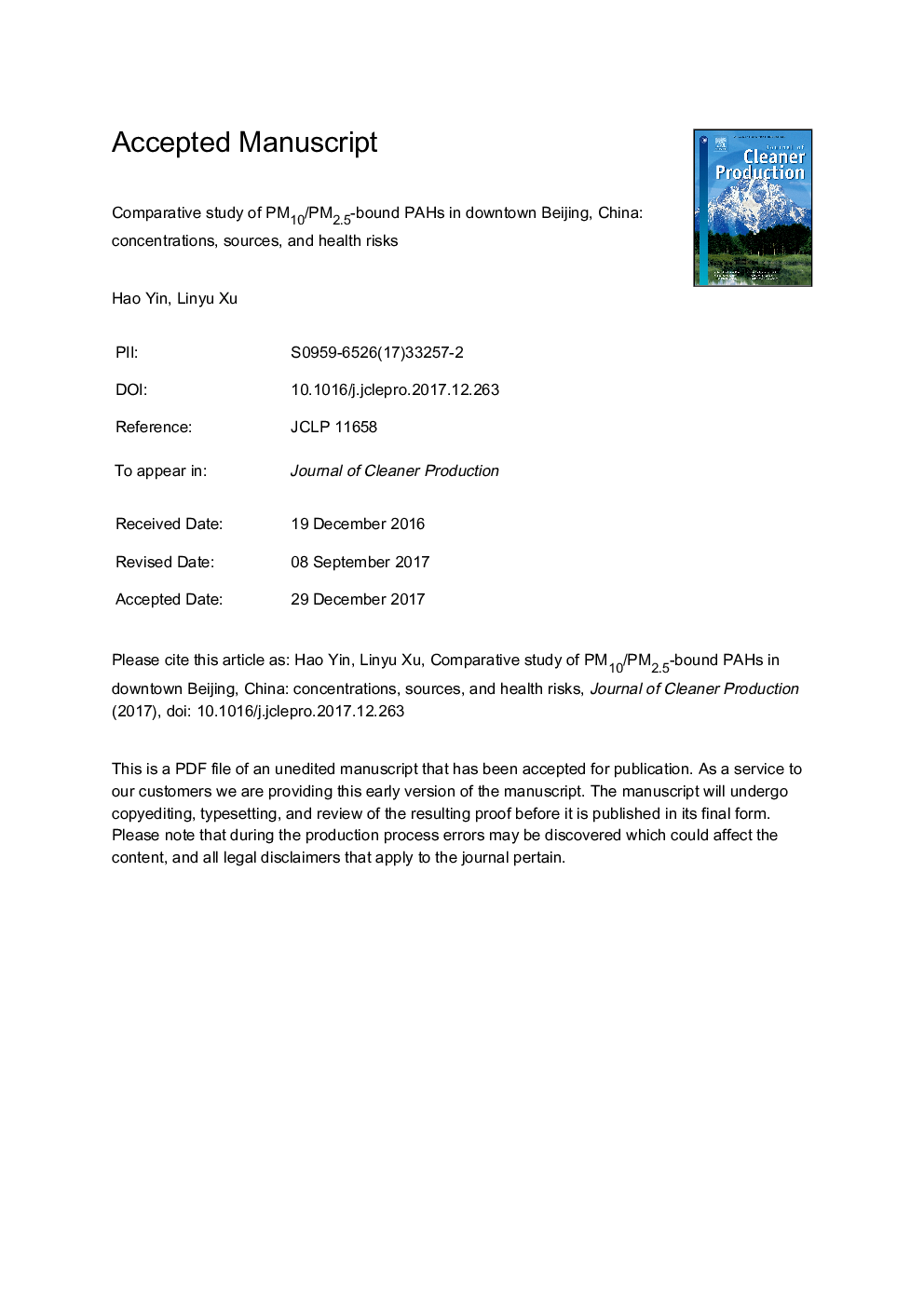| کد مقاله | کد نشریه | سال انتشار | مقاله انگلیسی | نسخه تمام متن |
|---|---|---|---|---|
| 8098786 | 1522076 | 2018 | 31 صفحه PDF | دانلود رایگان |
عنوان انگلیسی مقاله ISI
Comparative study of PM10/PM2.5-bound PAHs in downtown Beijing, China: Concentrations, sources, and health risks
دانلود مقاله + سفارش ترجمه
دانلود مقاله ISI انگلیسی
رایگان برای ایرانیان
کلمات کلیدی
موضوعات مرتبط
مهندسی و علوم پایه
مهندسی انرژی
انرژی های تجدید پذیر، توسعه پایدار و محیط زیست
پیش نمایش صفحه اول مقاله

چکیده انگلیسی
Exposure to the PM10/PM2.5-bound polycyclic aromatic hydrocarbons (PAHs) is a severe problem in heavily polluted cities in China. Designing effective air pollution management policies requires knowledge of the sources and health risks of PM10/PM2.5-bound PAHs. This study investigates the comparative differences of meteorological influences on PM10/PM2.5-bound PAHs distributions, as well as their potential sources and health risks. The aim of this study is to provide a science-based rationale for particle-bound PAHs pollution control. Both PM10 and PM2.5 samples were collected in the center of Beijing, China in winter and summer from 2013 to 2015. The meteorological conditions were monitored simultaneously. An analysis of the correlation between meteorological variables and PAHs concentrations indicates that average temperature, rainfall, and solar radiation had the most significant influences on the PAHs concentrations. A Principal component analysis combined with a diagnostic ratio tool is applied to the source apportionment of particle-bound PAHs, which indicates that diesel, gasoline, and coal combustion contribute most to PAHs pollution. The high emissions of the PM10/PM2.5-bound PAHs result in a 3.72Â Ã 10â3/3.31Â Ã 10â3 and 5.79Â Ã 10â5/4.39Â Ã 10â5 excess lung cancer risk in winter and summer, respectively. PM2.5 contains more PAHs than the coarser fraction (PM2.5-10), and accounts for 89% (winter) and 76% (summer) of the health risk caused by PM10. Given the higher risks caused by PM2.5 than the PM2.5-10 portion, PM2.5 should be treated as the prioritized-control pollutant. Moreover, actively reducing the combustion of fossil fuels and a strategy of changing residents' exposure characteristics are proposed for the mitigation of particle-bound PAHs pollution and control of health risks.
ناشر
Database: Elsevier - ScienceDirect (ساینس دایرکت)
Journal: Journal of Cleaner Production - Volume 177, 10 March 2018, Pages 674-683
Journal: Journal of Cleaner Production - Volume 177, 10 March 2018, Pages 674-683
نویسندگان
Hao Yin, Linyu Xu,